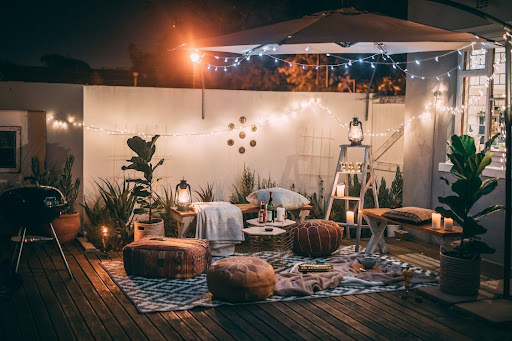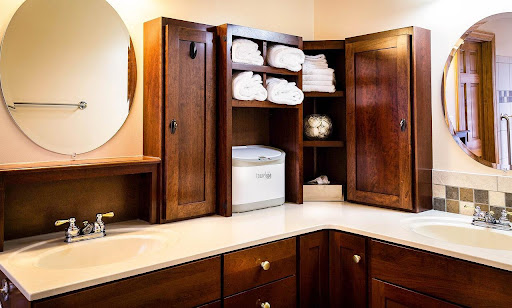Renovating your living room can breathe new life into your home, creating a welcoming and stylish space for relaxation and entertainment. Undertaking a DIY living room renovation allows you to exercise creativity and save money. However, careful planning and preparation are crucial for a successful project. Here’s a comprehensive guide that covers all the essential aspects you need to consider when renovating your living room DIY style so you can use your 22Bet login stress-free.
Table of Contents
Set a Clear Vision
Before diving into your living room renovation, envision the end result. Determine the style and ambiance you want to create. Research interior design magazines, websites, and social media platforms for inspiration. Consider factors such as color schemes, furniture layout, lighting, and décor elements. By having a clear vision, you can make informed decisions throughout the renovation process, ensuring a cohesive and aesthetically pleasing outcome.
Assess the Space
Evaluate the current layout and functionality of your living room. Take measurements of the room, noting the position of doors, windows, and electrical outlets. Consider the flow of traffic and how you and your family use the space. Identify any structural or architectural features that can be enhanced or modified. Understanding the strengths and limitations of your living room will help you plan the renovation effectively, optimizing both form and function.
Plan the Budget
Establishing a realistic budget is vital for a living room renovation. Determine the amount you can comfortably allocate to the project. Research the costs of materials, furniture, lighting fixtures, and any professional services you may require. Leave room for unexpected expenses and prioritize where you want to invest your budget, such as high-quality furniture or statement pieces. By planning your budget in advance, you can make informed choices and avoid overspending.
Create a Design Plan
Translate your vision into a tangible design plan. Sketch the layout of the living room, incorporating furniture placement, wall colors, flooring options, and lighting fixtures. Consider both functionality and aesthetics, ensuring that the design aligns with your lifestyle. Explore different design styles and select elements that reflect your personal taste. Create a mood board or use digital tools to visualize the overall look and feel of the space. Having a detailed design plan will guide your renovation process and prevent costly mistakes.
Gather Necessary Materials and Tools
Compile a list of materials and tools required for your living room renovation. This may include paint, wallpaper, flooring materials, lighting fixtures, furniture, and decorative accessories. Research suppliers and compare prices to ensure you obtain quality materials within your budget. Additionally, gather essential tools such as a paintbrush, roller, drill, screwdriver, and measuring tape. Having all the necessary materials and tools readily available will streamline the renovation process and minimize disruptions.
Consider Structural Changes
Assess whether your living room requires any structural changes to achieve your desired outcome. This may involve removing or adding walls, installing built-in shelving or storage, or adjusting the position of doors and windows. Consult with a professional if needed, especially when dealing with load-bearing walls or complex electrical and plumbing work. Understanding the feasibility of structural changes and seeking expert advice will ensure safety and compliance with building codes.
Focus on Lighting
Lighting plays a crucial role in setting the mood and enhancing the ambiance of your living room. Consider a combination of natural lighting, overhead fixtures, task lighting, and accent lighting. Install dimmer switches to control the intensity of light. Explore energy-efficient options such as LED bulbs. Incorporate lighting fixtures that complement your design style and highlight focal points within the living room. Properly planned and executed lighting design will transform your space, creating a warm and inviting atmosphere.
Flooring and Wall Treatments
Choose flooring and wall treatments that align with your design vision and lifestyle. Consider options such as hardwood, laminate, carpet, or tiles for the flooring, ensuring durability and ease of maintenance. Explore different wall treatments like paint, wallpaper, or textured finishes to add character to your living room. Take into account the color palette and overall aesthetic of the space. Additionally, address any repairs or refinishing required for existing flooring or walls before proceeding with the renovation.
Furniture and Decor
Select furniture pieces that not only complement your design style but also prioritize comfort and functionality. Measure the available space to ensure the furniture fits appropriately. Consider the layout and arrangement of seating areas for optimal conversation and traffic flow. Choose decor elements such as rugs, curtains, artwork, and accessories that enhance the overall theme of the living room. Incorporate storage solutions to keep the space organized and clutter-free. By carefully curating furniture and decor, you can create a cozy and inviting living room.



